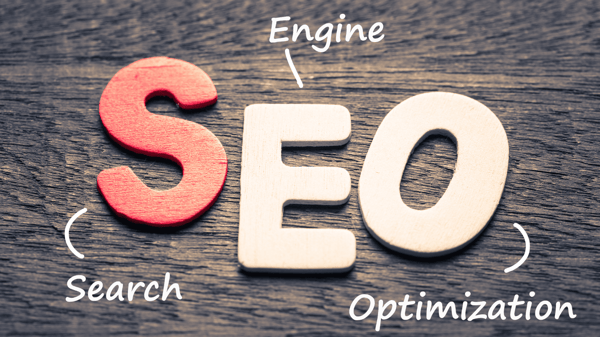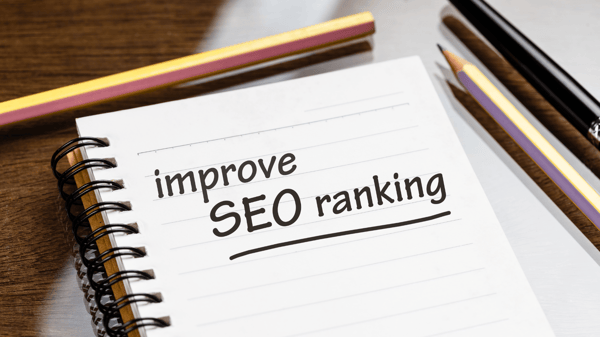The Perfect Blog Article Process for E-commerce Sellers

Hello, and welcome to Whiteboard Sessions with me Andrew Maff. I'm the founder and CEO of BlueTuskr, a full-service digital marketing company for e-commerce sellers. And today, I'm going to go through the perfect process for creating blog articles to leverage your SEO for your e-commerce business. So I'm going to go ahead and dive right into first, the exact reason that you're here watching this video is why the hell do you even need blog articles in the first place? Blogging is not for my business. Most of the time, you're wildly incorrect.

Who to Target
Sometimes I have come across situations where I go, alright, blogs may not be great for your business. But here's we're gonna do we're gonna go off theory, I'm going to Kaiser so say this thing. And I'm going to do an example. So we're on a YouTube channel, and we sell lights, right? So we sell lights that are great for creating content, right? So I have one of those Bill ring things. And I've got a couple of other things in here. So let's say we sell those lights, right.
So our business is lighting. So we sell lights. The first thing you want to think about, is who are you targeting? In this scenario, we're basically targeting YouTube people, so people who have their own YouTube channel. So one of the things you want to do first is create a customer profile and brand voice guidelines. There's a ton of templates online, you can pull information about questions, you have to ask to figure out who your customer is.
We have one internally if you want it to shoot me a message, and we'll get it to you. But basically, it's the big old list of like, who is your customer. And then it's another little list of who are you speaking as what you want to figure out is exactly who you're talking to, and exactly who you're going to speak as. So you want to make sure that if this person is in a great mood, you have someone who's super excited, and talks like really know what they're talking about, but really excited. And so you can cater to them.

Customer Profile Brand Voice Guidelines
So basically customer profile brand voice guidelines get onto the same page, their copy comes out the same way. Right? Cool. Sound lights? The first thing you want to do is keywords, right, yeah, forgot our keywords. So the first thing we want to do is want to figure out what do we want to rank for? Why, like, what are we ranking for even the most obvious right to have your products. That's products. And then you also have your brand name. So if you have a crazy brand name that no one's ever heard of, like, I don't know, blue Tasker rang, if you're brand new, it's pretty easy.
But if you have a brand name, it's a little bit more general, you're gonna want to make sure that you include your brand name on all your pages, and then all of your blog posts on stuff to kind of get that brand name back up there, then every obvious which is products, but then you have really the ones that you really want to focus on. And that's going to be anything that attracts your audience.

Audience Terms
So any kind of relevant terms that your audience is interested in. So we'll just call these audience terms. And by the way, this is audience turns, I don't even know why I do whiteboard sessions, I have to write I have hair, terrible handwriting. So we're gonna call his audience terms. And so basically, what that's referring to is anything relevant to who your audience is targeting, not necessarily your business. So in this scenario, we're selling lights, right? None of this is going to have to do with lights, or very little of it is going to have to do with lights. This will be a little bit more catered delights.
So we're gonna figure out all these terms, and how do you figure those turns out, right? The first thing you want to do is figure out like, Okay, what do we sell? And then who are we selling to, and come down with like a bunch of words that you think would be relevant, right? You're not 100% Sure, just comes up in your head, your you know your business better than you are, then from there, use a certain platform that will give you some data behind this stuff.
SEO Platforms
So let's say we use SEMrush internally, but you also have Moz, you have HRefs, you have Neil Patel's like Ubersuggest, and all that fun stuff for Keywords Everywhere. There's also think Keyword Shitter is another one I saw the other day, which was hilarious. So there's a ton of them, right? So you find all these different stuff, what you do is you start plugging in the terms into this different software. And basically what's gonna happen is like, if you did like, YouTube lights, right, so let's say YouTube lights, it should spit out for you a ton of different variations of those terms.

Keyword Cost-Per-Click
Okay. The other thing it's going to give you is your cost per click for that term, projected your competitive advantage for that term. And then, of course, your search volume for that term, right. So now what you're gonna want to do, this is going to come down to per category per company kind of thing. But you're going to want to figure out, what's my target term for search volume, cost per click, and competitiveness, you're gonna find a sweet spot where you go.
Okay, anything that has this type of competitiveness with this range cost per click with this range, search volume is exactly what I rank for. And then you start to pull reports based on that parameter, but for now, we're starting from scratch, right? So we find all these returns are gonna do that. The first thing you're going to want to do is to create what we refer to them what a lot of people refer to as a pillar piece.
So it's gonna be a big old article, we usually say about 5000 words give or take, you know, you don't want to force it because then it comes fluffy. But you also don't want to leave it light. So usually suggested mean 5000 terms. And so now let's say we do YouTube lights, and we have all these different variations, that pillar piece is going to be your general, it's going to be something along the lines of why you need lights or the best lights for your YouTube channel, or why you need lights for YouTube channel, relatively broad.
And what you're going to want to do is get really deep into the top ones, the top lights to have, why you need a light, how to set up your light, when to use your light when not to your life, the types of videos that it's good for your life, all these different things, and you're going to get a lot of that data from all these terms, what you're going to do is you're going to break out all these terms into smaller one-off articles. And usually these we say like 1000 or 1500 words, give or take. So let's say we do like 1000 words.

Google SEO Strategy
When we start to do it, we write all these other smaller articles, right. And so all these smaller articles are going to link to this pillar page. And then this pillar page is going to also link to each of these guys, what's going to happen is you're basically telling Google that, hey, there's all this information that's braided that's relevant to this topic. And so Google is going to focus on this one, and it's going to start to drive that one up. And then if you have all of your products that are ranking to each of these as well, it's going to bring your products up with it.
Now, question is, how do you start writing this, right? So you have all these different terms? So what we say is like, Okay, so for this pillar piece, we want to focus on the term YouTube lights. And so now we know based on some of the reports that you can pull from some of these things, they will tell you, hey, with this term, these are a lot of articles that show up first, or these are a lot of questions that people ask, what we take is what questions are people asking? And then we write an article based on it.
YouTube
So we can do like, you know if people asked like, what are the top lights to use for my YouTube channel, we're going to do X top lights for YouTube, right? Blades, or YouTube. So really x top lights for YouTube, we're just going to take basically top lights for YouTube. And we're going to put that into Google. And we're going to grab the top three or four or five articles that are ranking for that term.
Now, you don't want anyone that's running an ad, you don't want at the SERP stuff. For now, we're just going to grab these. And what you can do is, then you're gonna write a little bit of information around the guy, these lights, I want to list things like that, they're going to take all that information, you're going to give it to a writer, okay? So it's your writer, go do it. Or if you have one of those AI things, do it there.

Write an Article
So you have your writer, go and write this out. From there, what's going to happen is you now have your article, go through your edits, if you're with your writer, if you need to add in some pictures, break it up so that it's user friendly. And then you just gonna publish it. Right? Said and done, congratulations, go sell your stuff. That's where most sellers end. And that's what drives me crazy is they write it and then they post it. And that's it. And they expect it to rank. And they go, why aren't I getting anything?
Why is nothing happening? There are two reasons. One, you can't just publish an article you have to drive traffic to at first, especially in the beginning of your business, if you've got existing traffic going already, you might not have to as much put in the beginning, put it on social, put it in an email, send it out to people, you might know anything you can do to kind of get that traffic up there. Because a lot of the signals Google takes in is traffic on the site, then bounce rate, time spent on page engagement, things like that.
How Google Works
So you're going to want to kind of pour some gas on that fire and let Google start to see this page. The other thing you want to do is go straight to Google console, as soon as you publish it, and have Google index it, Google will index it on its own, but it may take a while before it actually happens. So we go straight to Google console and tell Google-like, hey, this page is new. So go check it out.
Then the other issue that I see a lot of sellers make is after they've done that, they move on to the next article, and they keep writing and then they forget all about that one. We have a system where essentially, every few months, we go back to the original article, and we go see, okay, is there anything else we need to add to this?
Make Some Adjustments
Maybe we should change the title. Maybe we should tweak some images, maybe we should add a little bit more section to it. So maybe it was a 1000 word article. Maybe now I want to make it a 1500 word article. I want to change it, update it, and republish it. If you go and search on Google. Any search term, chances are you'll see most of those pages on the most of those articles on the first page are all going to be published within the past couple months.
And then if you look at some other terms, yeah, they might be as big as a year because a lot of people aren't writing about it. In other terms, it could be like, hey, every article on here is written in the past week. So by consistently updating it, you're showing Google-like, Hey, I'm keeping this information updated. It's accurate. I went in again, I keep it updated. It, basically Google will rerun it, and we'll put it back to the top.
Update your Old Blogs
So all of that by going back and updating it, from there with you telling Google, it's updated. We've done this several times, where we'll see an article that we haven't touched in six months. And it's on page two or three, and we'll tweak it, and boom, page one. So now the question is, how do you tweak it? What do you know to tweak? There's a science to it a little bit. And then there's also just the creative side. So the science to it is going to be figuring out taking this article and putting it in SEM rush putting into any of the software programs that you use, figuring out what is it currently ranking for, right? And so then you want to look at like, alright, what terms?

Ranking High
Is it not ranking that well, for that you want it to be ranking higher for? Okay, so these are, it's ranking on pages eight, nine, and 10. For these, let me go take those and add them in a little bit more into that article, let me put it in an h2 tag, let me put it as an alt tag on one of the images. So now you're basically telling Google-like, hey, there's more information around this term on this article, right.
The other thing to do is we use something called SEO server where essentially your surfer SEO, think surfer SEO, SEO, so it's not about those. And you go and look up the basics, you can actually take your article, plug it in there, take those three top articles. And it will actually tell you like, hey, add more of this term, change out this image, break this up a little bit, it will tell you comparatively what these articles are doing that you're doing that you should have done in the first place.
So basically, that will allow you to refresh your article. And so now, if you consistently do this, with all of these, this article will continue to go up, each of these will go up. And because each of these is like a variation of something that's going on in that pillar piece, these will start to rank, which will take this one and start to bring it up as well, which obviously means you want to take your products and make sure that you're linking them also, because all of those will start to bring it up SEO is all intertwined across your entire site.
Covering All of Your Bases
But if you start to write articles, based on specific variations for a certain topic, you're going to cover all of your bases in terms of different variations of terms that starts to go up. And as long as you're ranking your product, your product ranking will go up with it. Outside of all that the obvious that I always see sellers don't do is they just post the blog post and they don't put any kind of nice stuff on there. Like put a CTA about some new products that you have, make sure you have maybe a pop-up or a sidebar, or put in your own display ads on it, make sure that it is optimized enough to get emails with the FDA content or something like that.
But this is the exact process we follow that we have proven out and is worked fantastically. And I highly, highly recommend looking into it mainly because the cost per click is going up, which means your cost per acquisition is going up to everything that you do for SEO now you will thank yourself later. So this can take months for SEO to start to really move and get enough traffic for it to justify.
But the best part about SEO and focusing on this that I always tell sellers is that if one day you have a budget issue and you can't afford a writer anymore to write articles or something along those lines, and you stop making articles, for a very long time, your SEO will maintain and it will keep going. So it's almost like you're gonna stop spending but you'll keep getting the benefits of your SEO paid advertising as soon as you stop your budget. Paid advertising is gone and it's off. This is an asset. This is building an asset on your business building out the traffic and building other people you can continue to bring your site highly recommended it I will get off my pedestal now but please make sure you rate review subscribe to all that fun stuff.
Comment below if I missed anything or if you want prior, more clarification, and then, of course, let me know if there's another video you'd like us to do here but if not, I will see you all next time and appreciate you coming out have a go
Watch The Full Video Here:








Leave a Reply